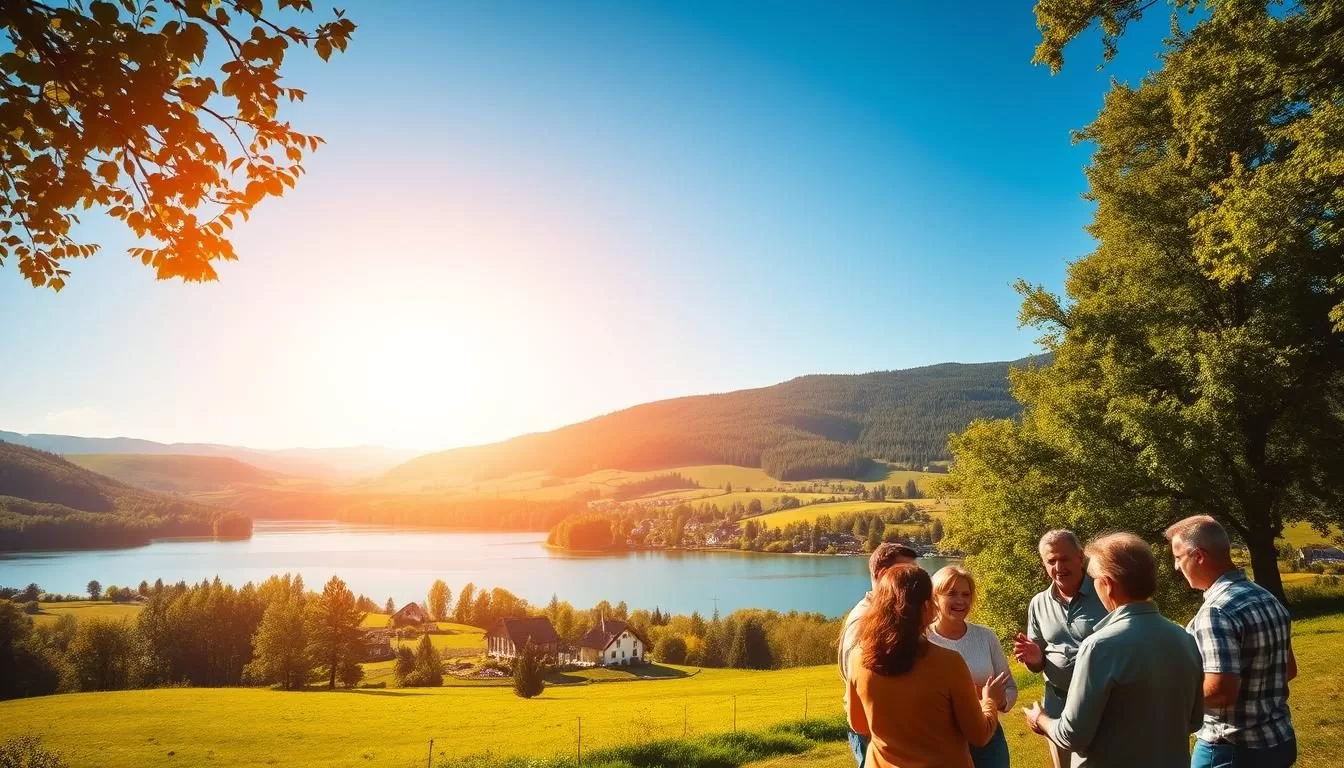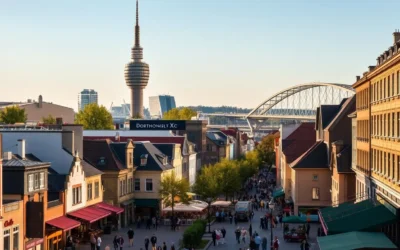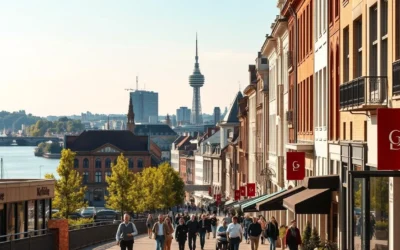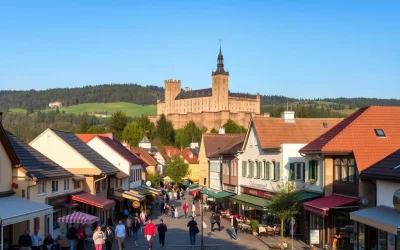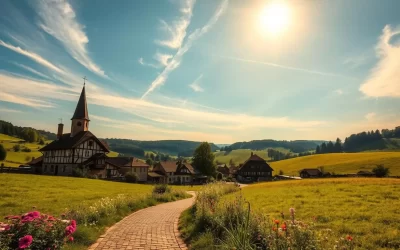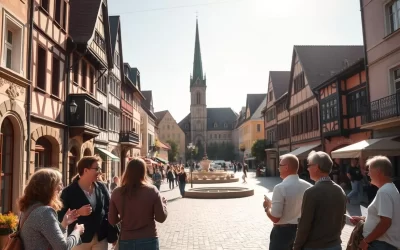Welcome to the fascinating world of Schleswig-Holstein, a region where history and culture blend seamlessly. Nestled between the Baltic Sea and the North Sea, this area is a melting pot of influences that shape its unique identity.
The language here tells a story of its own. From historical Danish roots to the dominance of German, the linguistic landscape has evolved over centuries. Today, standard German plays a central role, connecting people across the state.
Understanding the language is key to experiencing the local culture. It’s more than just words; it’s a part of the region’s soul. Whether you’re exploring coastal towns or inland villages, the blend of historical and modern speech is everywhere.
This area offers a rich tapestry of traditions and dialects. Dive into its linguistic heritage, and you’ll find a deeper connection to its people and history. Let’s embark on this journey together and uncover the vibrant world of Schleswig-Holstein.
Overview of Schleswig-Holstein’s Linguistic Heritage
Exploring the language roots here reveals a rich tapestry of influences. The way people speak today is a reflection of centuries of cultural exchange and historical shifts. This area’s linguistic heritage is a blend of Danish, German, and minority contributions, creating a unique identity.
Historical Background and Cultural Roots
The region’s speech patterns trace back to the Viking Age, when Danish control shaped its early identity. Over time, German influences grew, creating a dynamic mix. Minority groups, like the North Frisian speakers, added their own flavor to the linguistic landscape.
Government policies have played a role in preserving these minority voices. Efforts to protect and promote local dialects ensure that the region’s cultural roots remain alive. This blend of history and policy has shaped the way people communicate today.
Evolution of Language in the Region
From medieval duchies to modern governance, the language here has evolved significantly. Danish and North Frisian influences remain, but standard German dominates daily life. This evolution reflects the region’s ability to adapt while honoring its past.
Understanding this linguistic journey helps you appreciate the depth of the area’s culture. Whether in official matters or everyday conversations, the blend of old and new creates a vibrant communication style.
Geography and Cultural Influence in Schleswig-Holstein
From coastal marshes to uplands, the land influences how people communicate. The natural landscape here plays a significant role in shaping the region’s culture and dialects. These physical divides have created pockets of unique linguistic habits that reflect the area’s history.
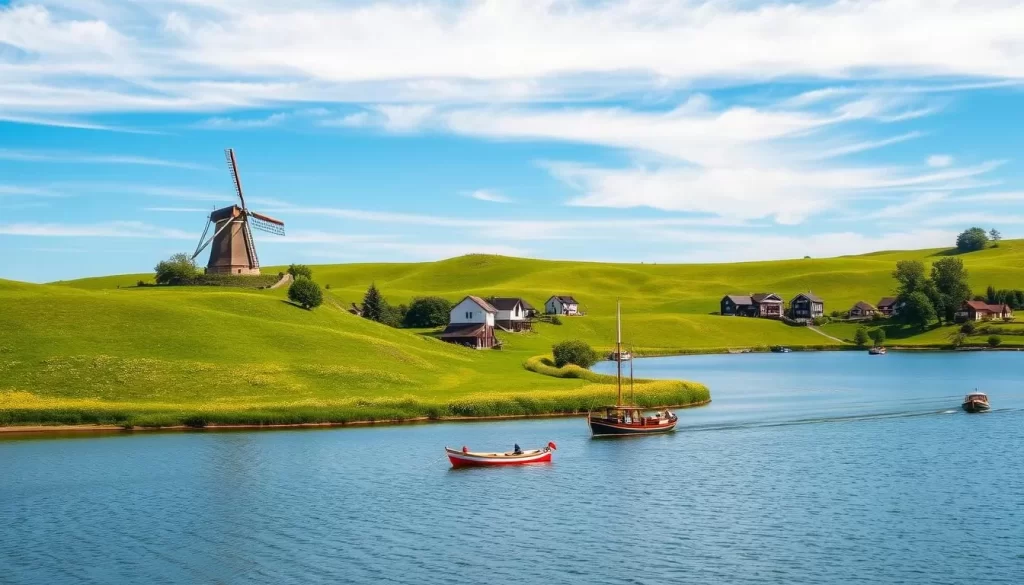
The Baltic Sea coast, with its marshes and fertile plains, has long been a hub for trade and interaction. This openness to external influences has enriched the local culture. In contrast, the uplands have fostered more isolated communities, preserving older forms of speech like Low German.
Regional Characteristics and Natural Divides
The distribution of the population across these landscapes has led to a variety of dialects. Coastal areas, with their bustling ports, tend to adopt more modern speech patterns. Meanwhile, inland villages often retain traditional expressions, showcasing the region’s linguistic diversity.
Over time, Low German and other regional dialects have adapted to the environment. For example, the flat marshlands have influenced softer, flowing speech, while the rugged uplands have encouraged sharper, more distinct tones. This evolution highlights the deep connection between geography and language.
Understanding these regional characteristics helps you appreciate the area’s rich heritage. Whether you’re exploring the coast or the hills, the way people speak tells a story of their environment. This blend of natural and cultural elements makes the region truly unique.
Official Languages and Government Policies
Standard German is the backbone of official and educational systems. It ensures clear communication across public institutions and schools. Government policies have played a key role in shaping this linguistic standard.
Role of Standard German in Administration
In administrative settings, standard German is the primary language. It simplifies processes and ensures consistency. This approach helps maintain clarity in public communications and official documents.
Government initiatives have reinforced this standard. By prioritizing German in administration, they create a unified system. This practice also supports effective governance and public service delivery.
Language in Public Institutions and Schools
Schools play a vital role in preserving language standards. Students learn standard German as part of their curriculum. This focus ensures they are well-prepared for future opportunities.
Public institutions follow similar guidelines. They implement language regulations to maintain consistency. Educators are trained to support these standards, fostering a cohesive learning environment.
These policies have a lasting impact. Students gain a strong foundation in German, which benefits them in various aspects of life. Educators also find it easier to deliver quality education in a standardized system.
Minority and Regional Languages in Schleswig-Holstein
The linguistic diversity of this region is a testament to its rich cultural history. Alongside standard German, minority and regional languages thrive, adding depth to the area’s identity. These languages reflect centuries of cultural exchange and preservation.
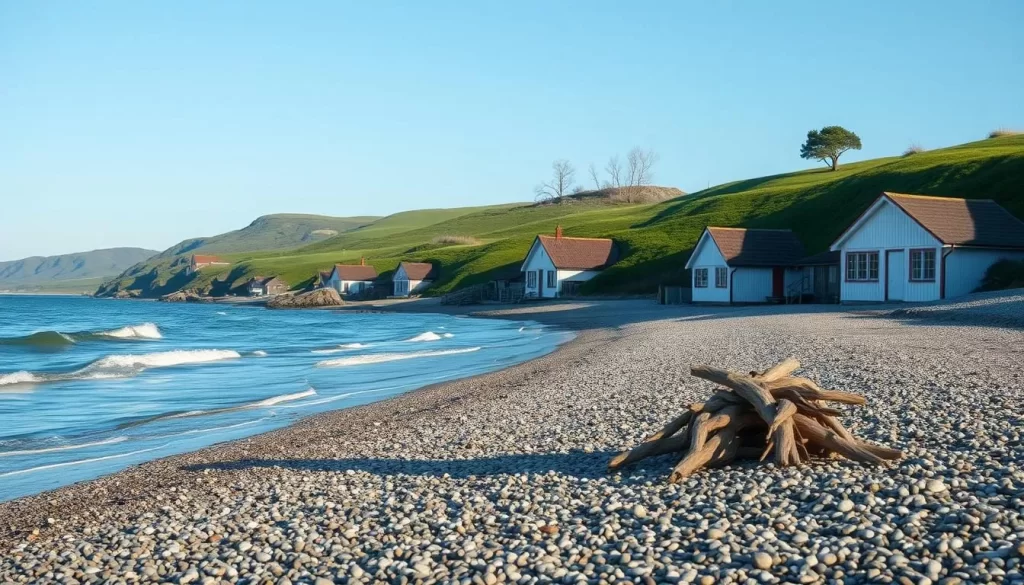
Danish, North Frisian, and Low German
Danish, North Frisian, and Low German are key parts of the region’s linguistic landscape. Danish is spoken by a significant minority, especially near the coast. North Frisian, a unique language, is preserved in small towns and islands.
Low German, also known as Plattdeutsch, remains a regional language. Despite demographic changes, it continues to be spoken in many communities. These languages are not just tools for communication but symbols of cultural pride.
Protections for National Minorities
Legal measures ensure the preservation of these languages. The European Charter for Regional or Minority Languages plays a crucial role. It requires part Germany to implement policies that support minority groups.
For example, parents can choose schools that teach in Danish or Frisian. Public administration also allows communication in these languages. These efforts highlight the state’s commitment to linguistic diversity.
- Danish-speaking communities thrive near the coast.
- North Frisian is preserved in specific towns and islands.
- Low German remains a vital regional language.
- Legal protections ensure minority languages are supported.
These measures not only preserve languages but also strengthen the cultural fabric of the region. By understanding these efforts, you gain insight into the importance of linguistic diversity in shaping identity.
The Dynamics of Standard German and Local Dialects
The way people speak in this region reveals a fascinating blend of tradition and modernity. Standard German dominates formal settings, while vibrant regional dialects thrive in everyday life. This interplay creates a unique linguistic landscape that reflects the area’s rich cultural heritage.
Dialect Variations and Cultural Significance
In formal contexts, standard German ensures clear communication across public institutions and schools. However, local dialects like Low German and North Frisian remain deeply rooted in daily life. These dialects are more than just ways of speaking; they are symbols of identity and pride.
Coastal areas near the north sea and baltic sea often feature softer, flowing speech patterns. Inland regions, by contrast, preserve sharper, more distinct tones. These differences highlight how geography shapes language use.
Despite the dominance of standard German, surveys show that 60% of residents believe local dialects are crucial to their cultural identity. This sentiment underscores the importance of preserving these linguistic traditions in a globally connected world.
| Aspect | Standard German | Local Dialects |
|---|---|---|
| Usage | Formal settings, education, administration | Informal conversations, family gatherings, local markets |
| Cultural Role | Unifies communication across the region | Preserves local identity and heritage |
| Geographic Influence | Uniform across the site | Varies between coastal and inland areas |
Local dialects are not just remnants of the past; they are living traditions that adapt to modern life. For example, 30% of speakers incorporate dialect features into their everyday speech, blending heritage with contemporary practices.
Understanding this dynamic helps you appreciate the region’s linguistic diversity. Whether you’re exploring coastal towns or inland villages, the way people speak tells a story of their environment and history.
Schleswig-Holstein, Germany: Official and widely spoken languages (Repeat for emphasis)
The linguistic landscape of this region is shaped by a mix of historical roots and modern influences. Understanding how people communicate today offers a glimpse into its rich cultural tapestry.

Language Demographics and Usage Patterns
Standard German is the primary official language, spoken by nearly 100% of the population. However, regional dialects and minority languages like Danish and Low German add depth to the linguistic diversity.
Approximately 50,000 residents identify as part of the Danish minority, with concentrations near the coast. Low German, spoken by around 1 million people, remains a vital part of everyday life in many communities.
Multilingualism is also common, with about 27% of residents reporting proficiency in more than one language. This blend of german language dominance and minority preservation reflects the region’s unique identity.
Cultural Impact on Everyday Communication
Language usage patterns reveal a balance between tradition and modernity. While standard German dominates formal settings, regional dialects thrive in informal conversations and local gatherings.
For example, in coastal areas, Danish influences are more pronounced, while inland communities often preserve Low German traditions. This diversity fosters a sense of pride and connection to cultural heritage.
Everyday communication reflects this blend. Whether in markets, schools, or public spaces, the interplay between standard and regional speech creates a vibrant linguistic environment.
Understanding these dynamics helps you appreciate the region’s cultural richness. It’s not just about words; it’s about identity, history, and community.
Language and Identity: A Historical Context
The story of language in this region is deeply tied to its historical conflicts. Over time, disputes over territory and speech have shaped its identity. The Schleswig-Holstein Question, a 19th-century conflict, played a pivotal role in this evolution.
This question revolved around control of the region and its people. It pitted Danish and German influences against each other, creating a complex linguistic landscape. The outcome of this struggle influenced how people spoke and identified themselves.
The Schleswig-Holstein Question and National Shifts
The Schleswig-Holstein Question was not just about borders. It was a battle for cultural and linguistic dominance. Danish and German factions fought to impose their standard german and dialects on the region.
This conflict led to significant shifts in national sentiment. As German influence grew, Danish speakers became a minority. Cities like Flensburg saw their linguistic identity transform over time.
Government policies further shaped these changes. For example, the introduction of standard german in schools aimed to unify the region. However, it also marginalized local dialects and minority languages.
Despite these challenges, communities preserved their unique speech. Coastal areas near the world-famous Baltic Sea retained Danish influences. Inland regions continued to use Low German in daily life.
These historical shifts provide context for today’s language dynamics. Understanding this past helps you appreciate the region’s rich linguistic heritage. For more on how minority languages are protected, explore the national minorities and regional languages framework.
Modern Language Policies and Education Initiatives
Modern efforts to preserve and promote linguistic diversity are reshaping education and policy in the region. From innovative curricula to government-backed programs, these initiatives aim to balance standard German with regional dialects and minority languages. This approach ensures that cultural heritage remains vibrant in every northern part of the state.

Curriculum Innovations in Language Learning
Schools are adopting new methods to teach both standard German and regional dialects. For example, bilingual programs now include Danish and North Frisian alongside German. These programs help students connect with their cultural roots while mastering the source of national communication.
Innovative tools like digital platforms are also transforming language education. Programs like “DigLu – Digital Learning on the Road” provide resources for students in remote areas. This ensures that even those near a national park have access to quality language instruction.
Government Support for Multilingualism
The government is actively funding initiatives to preserve linguistic diversity. Programs like “Language-Kitas” focus on early childhood education, ensuring young learners are exposed to multiple languages. This support extends to minority communities, helping them maintain their unique speech patterns.
Here are some key government efforts:
- Funding for minority language schools and cultural events.
- Policies that allow public administration in regional dialects.
- Support for teacher training in bilingual education.
These initiatives highlight the commitment to keeping language heritage alive. Whether in a bustling city or a quiet northern part of the state, these programs ensure that linguistic diversity thrives.
Economic and Industrial Impact on Language Use
Language plays a pivotal role in shaping the economic and industrial landscape of the region. From shipbuilding to machine construction, effective communication drives productivity and innovation. The ability to speak multiple languages, especially German and English, is a key asset in this thriving industry.
Language in Business and International Trade
In the north sea baltic region, businesses rely heavily on language proficiency to foster global partnerships. German remains the primary language for local operations, while English serves as the bridge for international trade. This dual-language approach ensures seamless communication with partners worldwide.
Historical developments have also influenced current language practices. For instance, the region’s shipbuilding industry has long been a hub for multilingual workers. This tradition continues today, with companies prioritizing language skills to maintain their competitive edge.
Here’s how language impacts key sectors:
- Shipbuilding: Workers often communicate in both German and English to collaborate with international clients.
- Machine Construction: Technical manuals and training materials are available in multiple languages to accommodate diverse teams.
- Tourism: Staff at world heritage site locations are trained to assist visitors in various languages, enhancing the travel experience.
Language also facilitates global business partnerships. Companies in the region frequently engage in cross-border projects, where clear communication is essential. For example, a German firm collaborating with a Danish counterpart might use English as the common language to ensure mutual understanding.
Understanding the role of language in the industry helps you appreciate its direct impact on the local economy. Whether in trade negotiations or daily operations, effective communication is the cornerstone of success.
For more on how regional languages are preserved, explore the national minorities and regional languages framework.
Traveling Through Schleswig-Holstein’s Linguistic Landscape
Navigating the linguistic diversity of this area can enrich your travel experience. Whether you’re exploring bustling towns or serene UNESCO world heritage sites, understanding local speech patterns helps you connect with the culture. Here are some practical tips to make your visit smoother and more enjoyable.
Local Communication Tips for Visitors
When visiting, a few key phrases can go a long way. While standard German is widely spoken, locals appreciate efforts to use regional dialects. For example, saying “Moin” (a casual greeting) can instantly make you feel more at home.
In tourist towns, many residents are multilingual. Don’t hesitate to talk in English if you’re unsure. Businesses, especially those near UNESCO sites, often cater to international visitors. This makes communication easier, even if you’re not fluent in German.
Interacting with Multilingual Populations
Popular destinations like Lübeck and Husum are hubs for multilingual interactions. Here, you’ll find locals who speak Danish, Low German, or even Frisian. Engaging with them in their native tongue can lead to richer cultural exchanges.
For instance, asking “Hvordan går det?” (How are you?) in Danish might spark a friendly conversation. Such small gestures show respect for the region’s diverse heritage.
Benefits of Understanding Language History
Exploring UNESCO world heritage sites becomes more meaningful when you understand their linguistic history. For example, Lübeck’s medieval architecture reflects its role as a Hanseatic trading hub. Knowing this context enhances your appreciation of the area.
Similarly, the Wadden Sea’s cultural significance is tied to its coastal communities. Learning about their dialects and traditions adds depth to your visit.
Practical Advice for Travelers
Here are some strategies to enhance your trip:
- Carry a phrasebook or use language apps to learn basic greetings.
- Engage with local company during tours or events to practice your skills.
- Visit cultural centers or museums to learn about the region’s linguistic heritage.
- Be patient and open-minded when communicating with locals.
By embracing the region’s linguistic diversity, you’ll gain a deeper connection to its people and history. Whether you’re here for business or leisure, these tips will help you make the most of your journey.
Conclusion
The linguistic heritage of this region reflects a blend of history and modernity. From the influence of the kiel canal to the cultural ties with denmark schleswig, the area’s speech patterns tell a story of resilience and adaptation. Standard German dominates, but regional dialects and minority languages thrive, showcasing a vibrant linguistic landscape.
Historical shifts and government policies have shaped this diversity. The term “linguistic identity” takes on new meaning here, where every word carries echoes of the past. Efforts to preserve minority languages ensure that this land remains a tapestry of traditions.
Exploring this region offers a chance to experience its unique language firsthand. Whether you’re near the kiel canal or in a quiet village, the interplay of history and modernity defines this vibrant land. Dive into its linguistic richness and discover a deeper connection to its people and culture.
The above is subject to change.
Check back often to TRAVEL.COM for the latest travel tips and deals.
